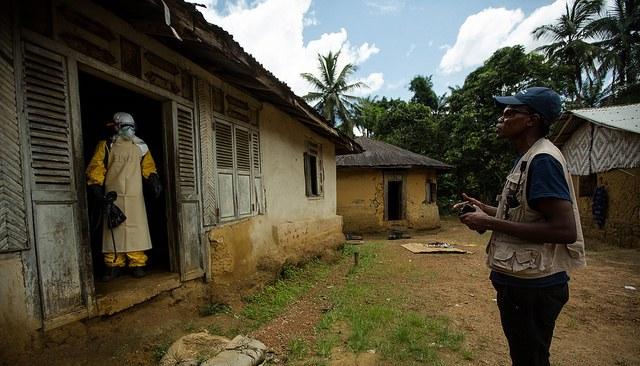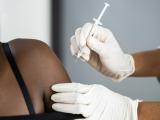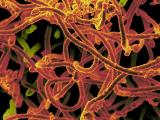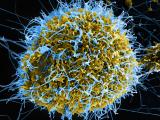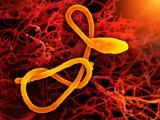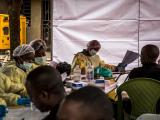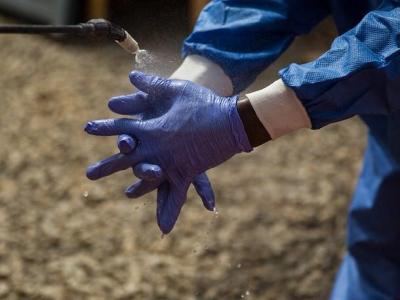Reports today from the US Centers for Disease Control and Prevention (CDC) and its global health partners show that Liberia's recent drop in Ebola cases is real yet fragile, with the disease still widely distributed and sparking new outbreaks in more remote areas.
In Morbidity and Mortality Weekly Report (MMWR) the CDC published an overview of the situation in Liberia since the outbreak began in March; a report on disease activity in Montserrado County, which encompassed Monrovia; and one on Lofa County, located in the north and bordering Sierra Leone and Guinea.
The CDC summaries seem to confirm recent reports from the WHO and Doctors without Borders, though both of those groups have warned that disease activity could climb again, as it has in Guinea and other locations, due to poor health infrastructure and fresh pockets of outbreak activity.
Reports cover multiple data sources
The overview report, which covers Ebola activity in Liberia through October, portrays a complex, evolving situation in which the virus is still widespread in both urban and rural areas. The response will require more intense efforts in the capital city of Monrovia to find new cases and identify contacts, as well as rapid outbreak containment in remote and newly affected areas, the CDC said in a press release today on the new reports.
CDC Director Tom Frieden, MD, MPH, said in a statement that the case decreases outlined in the reports show how important it is to intensify the Ebola response. "We have to keep our guard up. In Guinea, cases have increased and decreased in waves; we can't stop until we stop the last chain of transmission."
To measure disease activity in Montserrado County, researchers looked at three data sources: Ebola treatment unit (ETU) admissions, lab results, and body collection. All three measures showed declines since the middle of September. ETU admissions fell 73%, while positive lab tests for Ebola showed a 58% decrease, and body collection dropped 53%.
The team acknowledged that the local people's resistance to an order to cremate the bodies of Ebola victims raised the possibility that bodies were hidden and secretly buried, which would have affected the data. However, they said a rapid assessment in October done by the African Union and the CDC suggested no increased frequency of secret burials in September and October.
The researchers added that community action might have contributed to some of the decline and is a key to ongoing response efforts, which also hinge on rapid isolation, treatment, and removal of bodies for safe burial.
In their review of Ebola activity in Lofa County, where the outbreak began in Liberia, researchers looked at the number of new cases since Jun 8, ETU patterns, and test results of people who died. They found a substantial decrease that started as early as Aug 17. According to the report, the weekly number of new cases declined from 153 that week to just 4 for the week ending Nov 1. Similarly, ETU admissions dropped from 133 the week ending Aug 16 to just 1 for the week ending Nov 1.
The CDC said the response in Lofa County had several key elements that could serve as models elsewhere, including encouraging community behavior changes such as safe burials, establishing an ETU, setting up a hotline that helped get symptomatic people quickly to the ETU, active case finding, and training community volunteers to monitor contacts.
The researchers warned, however, that the county continues to report cases and that vigilance is needed, especially with increasing activity in Macenta, a district in Guinea that borders Lofa County. They also noted signs that some sick people in early October had been exposed in Monrovia.
Infections in health workers highlighted
In a fourth report on Ebola infections in Liberia's health workers in settings apart from ETUs, investigators focused on 62 cases identified by the country's health ministry that occurred before the middle of August. Cases fell into 10 clusters, seven of which involved hospitals.
Of 570 health workers who have been known to be infected with Ebola, the WHO has said a substantial number occurred outside of the context of Ebola treatment and care. According to the latest WHO figures, 324 health workers have died.
For four of the clusters, health workers were exposed by patients who had been admitted to the hospital with suspected infections but without a confirmed diagnosis. But in another four clusters they were infected by patients who were thought to have other conditions and later tested positive for Ebola. In one cluster, health workers were infected by a patient who initially tested negative for Ebola virus but later tested positive.
The report highlighted several consequences of the health worker infections that undermine the outbreak response: closure of health facilities, loss of routine medical services, and public mistrust of workers and the medical system.
To address infections in healthcare workers, the US government and other health partners have worked with Liberia's health ministry to boost its infection control infrastructure, the authors said. Also, the United States has built and staffed a 25-bed field hospital specifically to treat sick health workers.
WHO updates cases numbers, deaths
In an update today, the World Health Organization (WHO) said that as of Nov 11 the global number of Ebola cases has climbed to 14,413 infections, with the death total reaching 5,177. The numbers reflect 315 more cases and 17 more deaths than the WHO's last report on Nov 12.
In the three main outbreak countries since the WHO's last report, Guinea reported 41 more illnesses and 24 more deaths as of Nov 11, Sierra Leone reported 218 more cases and 18 more deaths as of Nov 11, and Liberia reported 55 more infections and 24 fewer deaths (due to reclassification) as of Nov 10.
Situation in Mali
Mali, the most recent country to battle an Ebola cluster, has reported 4 cases and 3 deaths as of Nov 13, the WHO said. It added that one probable case and one death have been reclassified and excluded from Mali's total since the Nov 12 update.
Mali had an isolated case in the western part of the country in a toddler from Guinea, but within the past few days the country has been probing a cluster in the capital city of Bamako linked to a sick imam who likely exposed health workers and an acquaintance. Local media reports say a few other people have tested positive but added that health officials are waiting on confirmation tests.
The WHO said public health workers in Mali are still monitoring 12 contacts connected to the first case in the western part of the country and are so far following 251 contacts in Bamako and 5 in Kouremale.
See also:
Nov 14 MMWR report on decreased Ebola transmission in Lofa County, Liberia
Nov 14 MMWR report on decrease Ebola transmission in Montserrado County, Liberia
Nov 14 MMWR report on Ebola in Liberia
Nov 14 MMWR report on infections in health workers in Liberia
Nov 14 CDC press release
Nov 14 WHO situation report
